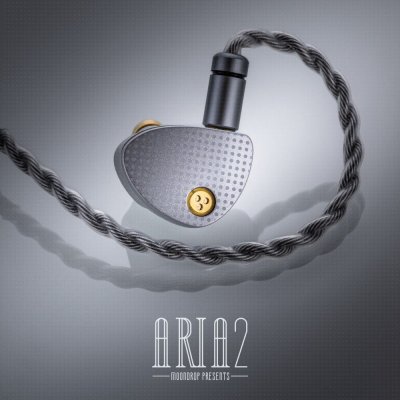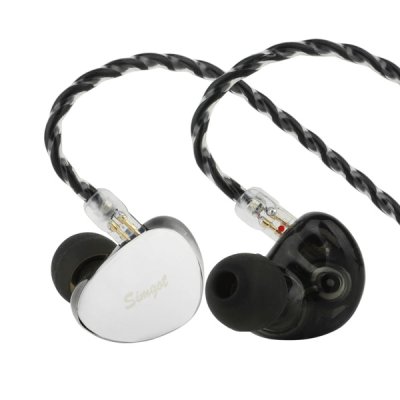Moondrop Aria 2 and SIMGOT EG280 are in-ear monitors. Moondrop Aria 2 costs $79 while SIMGOT EG280 costs $79. SIMGOT EG280 holds a slight 0.4-point edge in reviewer scores (6.2 vs 6.6). SIMGOT EG280 has slightly better bass with a 0.4-point edge, SIMGOT EG280 has slightly better treble with a 0.4-point edge, SIMGOT EG280 has significantly better dynamics with a 1.2-point edge, SIMGOT EG280 has better soundstage with a 0.5-point edge, SIMGOT EG280 has better details with a 0.5-point edge and SIMGOT EG280 has significantly better imaging with a 1.9-point edge.
Insights
| Metric | Moondrop Aria 2 | SIMGOT EG280 |
|---|---|---|
| Bass | 6.5 | 6.9 |
| Mids | 6.5 | 6.7 |
| Treble | 6.3 | 6.7 |
| Details | 6.5 | 7 |
| Soundstage | 6.5 | 7 |
| Imaging | 5.5 | 7.4 |
| Dynamics | 5 | 6.2 |
| Tonality | 6.1 | 7.1 |
| Technicalities | 6.3 | 7.5 |
Moondrop Aria 2 Aggregated Review Score
Average Reviewer Scores
Average Reviewer Score:
6.2Mixed to Positive
SIMGOT EG280 Aggregated Review Score
Average Reviewer Scores
Average Reviewer Score:
6.6Cautiously Favorable
Reviews Comparison
Moondrop Aria 2 reviewed by Jays Audio
Youtube Video Summary
Aria 2 Red keeps the familiar Moondrop house tuning—balanced, clean with a gentle mid-bass lift—but shifts more mid-centric thanks to extra upper-mid energy. Vocals gain power and clarity, and the previous Aria 2’s fuzziness/soft timbre is tempered by trimming treble air, which in turn improves low-end tactility and preserves a good sense of space. Tip rolling isn’t picky: Softears Ultra Clear for smoother playback or Azla Sedna for more bite. It plays well at normal to mid-high volumes, though pushing it loud can get shouty around 1–4 kHz.
Against its siblings and peers, Red comes across as the most natural all-rounder in the Aria family—preferred over the OG and SE—which now feel outdated. Technicalities see a small bump versus Aria 2, yet remain a notch under sets like Defiant and EW300; sub-$100 planars (CLAR/F1 Pro/S12) still offer stronger raw performance. Versus EW300 (3.5), Red trades blows but the EW300 hits with better bass texture, slam, and treble detail, plus useful tuning nozzles and frequent sub-$60 pricing, making it the sharper value for many. For a similarly clean, airy tonality with more separation and sub-bass reach, Defiant is cited as the more compelling pick around the same bracket—QC caveats acknowledged on both sides.
Value is the sticking point. At $100 the Red feels slightly pricey amid a crowded field where Simgot’s EM6L (often ~$90) offers a smoother, more dynamic take, and options like A-Explorer, Yay500 LM, CCA Hydro, or plentiful $50 single-DDs provide distinctive flavors and strong technicals. The verdict is a half-recommendation: as a well-balanced, nicely built daily driver it works—especially on sale around $60–$70—but at full MSRP, enthusiasts seeking uniqueness or performance-per-dollar will likely find richer alternatives.
Jays Audio Youtube Channel
Buy Moondrop Aria 2 on Linsoul
Ad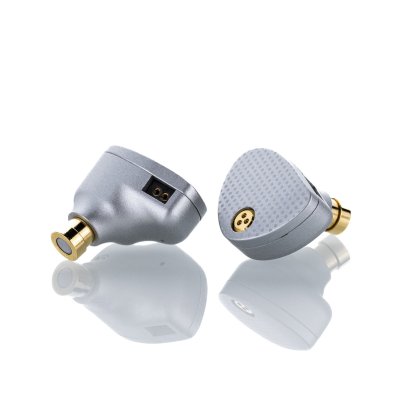
Price: $99.99
Buy Moondrop Aria 2 on Linsoul
SIMGOT EG280 reviewed by Jays Audio
Youtube Video Summary
SIMGOT’s EG280 comes tuned as a balanced all-rounder with a touch of upper-mids/vocal emphasis. The bass is thumpy, full, and clean—adding weight without bleed or warmth bloat—while a slightly forward midrange brings clarity and presence to voices. A purposeful 4–8 kHz dip keeps the set from turning shouty, and the treble—handled by planars—stays natural without the zingy “planar timbre.” Extension is adequate to mildly airy, revealing small details without sounding artificial.
There is a caveat: a 13 kHz peak can pop up on brighter K-/J-Pop or lean mixes, so mid listening levels (~70–75 dB) are the sweet spot. Technically it sits above EW300 but slightly below EA500 LM/EM6L, trading max microdetail for a more natural, less bright tonality. Genre fit is broad—from pop and indie to electronic—so long as volume isn’t cranked. Tip pairing favors smoother or bass-adding tips (e.g., Final E, Softears Ultra Clear) over anything that pushes treble further.
Imaging is a standout for the price, giving gunshots and footsteps extra pop without harshness, which makes the EG280 surprisingly solid for gaming. The lightweight build and low-microphonic cable boost comfort for long sessions. Overall, think safe, balanced, and versatile rather than showy “special sauce”: a set that’s easy to live with, competitive in value, and a smarter pick for mixed music + gaming than brighter, sharper peers—just mind that upper-treble spike on hot masters.
Jays Audio Youtube Channel
Buy SIMGOT EG280 on Linsoul
Ad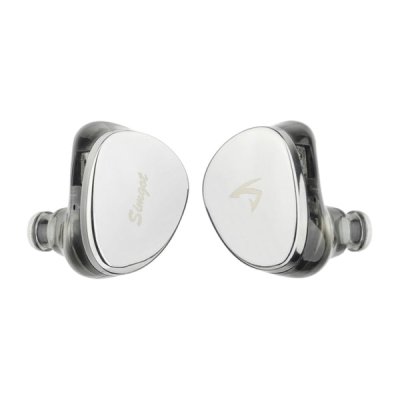
Price: $79
Buy SIMGOT EG280 on Linsoul
Moondrop Aria 2 reviewed by Head-Fi.org
SIMGOT EG280 reviewed by Head-Fi.org
Moondrop Aria 2 (more reviews)
Moondrop Aria 2 reviewed by Z-Reviews
Youtube Video Summary
Moondrop switches up the formula with Aria 2’s single dynamic “dome” driver, creating a presentation that feels set back from the head with surprising soundstage depth and precise positional cues. Instead of shoving detail forward, the tuning stays smooth, coherent, and non-fatiguing while still keeping vocals engaging and treble tidy. At $89, it becomes the new default pick in the sub-$100 bracket—easily preferred over other budget crowd-pleasers—thanks to that airy layering and “in-the-room” spacing that’s rare at this price.
Build and accessories are enthusiast-friendly: a weighty metal shell, recessed 2-pin, and a modular cable with 3.5/4.4 mm ends (the 4.4 plug fits tight, but locks solidly). The nozzle uses a replaceable acoustic filter and there’s a pressure-relief vent, though no spare filters are included and the tip selection is basic. Pairing scales well—from clean Class-A amps to punchy portables—without upsetting the balance; different sources simply shift flavor, not quality. Add the unexpectedly classy design and this becomes an easy top recommendation under $100 for listeners who value staging, ease, and refinement over brute-force brightness.
Z-Reviews Youtube Channel
Moondrop Aria 2 reviewed by Jaytiss
Youtube Video Summary
Build and accessories hit above the price: a metal shell with a golden nozzle, medium-sized fit, solid lip for tips, and a tasteful faceplate flourish. The stock cable feels premium with clear L/R markings, a chin slider, and an easy quick-swap plug system that makes 3.5↔4.4 painless. The case is a standout—leatherette feel, smooth zipper—and the tips selection is practical. Street price hovers around $90, often dipping to the $60–70 range during sales, which makes the overall package compelling for the money.
Sonically, Aria 2 leans on clean upper-mids and a smooth treble with a lighter bass shelf; dynamics are modest, imaging is respectable, and resolution is good for the tier. It tracks very close to the original Aria’s tonality (with slightly less bass) and overlaps with Moondrop’s current lineup enough to reduce the appeal of some pricier siblings, while outclassing bright-tilted alternatives like Dunu’s Titan S2 on ease of listen. Think of it as a vocal-forward, safe single-DD that trades slam for clarity; a solid B/B- performer that’s easy to like, easier to recommend at sale pricing, and worth shortlisting if smooth, airy mids and a tidy, well-built kit are the priority.
Jaytiss Youtube Channel
Moondrop Aria 2 reviewed by Gizaudio Axel
Gizaudio Axel original ranking
Gizaudio Axel Youtube ChannelMoondrop Aria 2 reviewed by Shuwa-T
Moondrop Aria 2 reviewed by Tim Tuned
Youtube Video Summary
Moondrop Aria sets a brutal value bar at $79, pairing elegant presentation with no-nonsense accessories: a tidy case, comfy fabric cable with zero microphonics, and serviceable tips. Build and box feel surprisingly premium—clean, simple, and just… right. As a package, it’s the kind of under-$100 IEM that forces every new budget set to prove itself against it first.
Sonically, Aria hits a neutral-with-bass-boost target that’s broadly Harman-leaning: a punchy mid-bass focus for thump and slam, modest but present sub-bass, and a clean handoff to the mids with no bleed. Vocals are the star—male voices carry a touch of warmth and weight, while female vocals have a bit more energy than sets like Starfield/KXXS, bringing them alive without turning shouty. Treble keeps things safe rather than spicy; not a pick for treble-heads, but still balanced enough that the overall presentation never dives into murk—just a smoother tilt up top.
Technical performance is where the “how is this $79?” reactions kick in. Detail retrieval is top-tier for the price, easily out-resolving many sub-$120 competitors, and the soundstage runs wider than typical budget fare. Imaging is competent rather than laser-etched (Starfield still images better), but the total package—tuning, clarity, width, and day-to-day listenability—feels unfair at this bracket. Verdict: a beginner’s best friend and the default recommendation under $100; if the budget is $50, it’s worth saving a little more for Aria.
Tim Tuned Youtube Channel
SIMGOT EG280 (more reviews)
SIMGOT EG280 reviewed by Paul Wasabii
Youtube Video Summary
Hybrid gaming set built around a 10 mm dynamic driver and a 6 mm planar, plus a USB-C DSP dongle and a 1.7 m cable. Stock tuning follows a Harman-style balance with a modest bass shelf and a slightly brighter upper range, which favors imaging, FX clarity, and footsteps in shooters. Technical performance is solid for the class: the planar adds resolve without obvious planar timbre, making the set feel more like a clean hybrid than a pure DD.
The idea here is presets: SIMGOT provides app control and WalkPlay hosts multiple music and game modes as well as community uploads, so the EG280 is best treated as a flexible DSP platform. For music, a gentle low-Q tilt (bass up a few dB, treble down a touch) yields a more fun, less fatiguing listen; stage is serviceable rather than wide, while detail retrieval and positional cues remain a strength. Overall, it is a capable, EQ-friendly gaming hybrid that can double for music with minimal EQ, but out-of-box brightness means it benefits from presets to shine.
Paul Wasabii Youtube Channel
SIMGOT EG280 reviewed by
 Fresh Reviews
Fresh Reviews
Youtube Video Summary
The SIMGOT EG280 makes a strong first impression for budget gaming with a curve reminiscent of Harman 2019: footsteps (both low and upper registers) and gunfire pop through cleanly, giving deathmatch sessions a snappy, almost B+-tier feel. However, once the action shifts to coordinated 5v5 play, the mix starts to blur—layering behind walls turns into a “mashed potato” effect, and horizontal cues lack the tactile edge that marks exact peeks and thresholds.
In Valorant and Apex, the same pattern holds: respectable general imaging, but depth perception and separation take noticeable hits when the battlefield gets chaotic. Smokes, thermites, ultimates, and sustained gunfire mask lighter cues—leading to those “where did this guy come from?” moments—and vertical readouts feel approximate rather than pinpoint. Overall placement sits around a B- for both titles: a pleasant, airy presentation that’s easy to enjoy in lighter modes, but not the clearest tool for high-level competitive awareness when the screen fills with abilities and crossfire.
Fresh Reviews original ranking
Fresh Reviews Youtube ChannelSIMGOT EG280 reviewed by Web Search
The SIMGOT EG280 is a budget-class, hybrid gaming IEM that pairs a 10 mm dynamic driver with a 6 mm planar unit per side (rated at 32 Ω, 119 dB/Vrms), a configuration positioned to blend bass weight with fast mid/treble transients. Packaging is unusually comprehensive at this price: a long ~1.7 m 2-pin cable with inline mic plus a bundled USB-C DAC that works with the SIMGOT Control app for preset EQ and game profiles, making it plug-and-play across phones and laptops. Street pricing has launched around ¥299 / ~$42–45, putting it squarely in value territory for an entry gaming set. .
On tonality and performance, the EG280 is pitched for positional accuracy and clarity—marketing materials emphasize “seamless frequency transition” and game-oriented EQ options—so expectations should lean toward a mildly U-shaped balance with clean mids and crisp upper registers rather than basshead emphasis. Early community impressions and graphs likewise frame it as a clear, energetic listen with solid imaging for competitive titles, while the included DAC/app path offers useful tailoring if treble sheen or bass quantity needs trimming for long sessions. At the price, technicalities (detail retrieval, imaging precision) are respectable; staging depth and macrodynamics are more modest, which is typical in this cost bracket. .
Moondrop Aria 2 Details
Driver Configuration:
Tuning Type: n/a
Brand: Moondrop Top Moondrop IEMs
Price (Msrp): $79
Support our free service! Buying through our affiliate links costs you nothing extra:
SIMGOT EG280 Details
Driver Configuration: 1DD+1Planar
Tuning Type: U-Shaped
Brand: Simgot Top Simgot IEMs
Price (Msrp): $79
Support our free service! Buying through our affiliate links costs you nothing extra:
Moondrop Aria 2 User Review Score
Average User Scores
Average User Score: n/a
Based on 0 user reviews
No user reviews yet. Be the first one who writes a review!
SIMGOT EG280 User Review Score
Average User Scores
Average User Score: n/a
Based on 0 user reviews
No user reviews yet. Be the first one who writes a review!
Moondrop Aria 2 Gaming Score

Gaming Score & Grade
- The gaming score is prioritizing technical capabilities of the IEM (Separation, Layering, Soundstage) and good value.
Gaming Score
6.2Gaming Grade
BSIMGOT EG280 Gaming Score

Gaming Score & Grade
- The gaming score is prioritizing technical capabilities of the IEM (Separation, Layering, Soundstage) and good value.
Gaming Score
7.4Gaming Grade
A-Moondrop Aria 2 Scorings
Average Technical & Tuning Grades
Average Tunign Grade
B- Tonality is generally agreeable, though a few bumps remind you of its limits. Certain tracks spotlight its tonal quirks.
Average Technical Grade
B- An honest, middle-of-the-road performance preserves structure without chasing micro-detail. It's respectable for everyday listening sessions.
SIMGOT EG280 Scorings
Average Technical & Tuning Grades
Average Tunign Grade
A-- A smooth, agreeable balance keeps the presentation engaging without obvious flaws. Only sensitive ears will nitpick the bumps.
Average Technical Grade
A- It manages detail and layering well enough, even if the stage feels only moderately sized. You get a clear sense of left and right, if not depth.
Moondrop Aria 2 User Reviews
"This is an example review"
Pros
- Example pro 1
- Example pro 2
Cons
- Example con 1
- Example con 2
Share your experience and build your personal ranking list.
You need to be signed in to write your own reviewBuy Moondrop Aria 2 on Aliexpress
Ad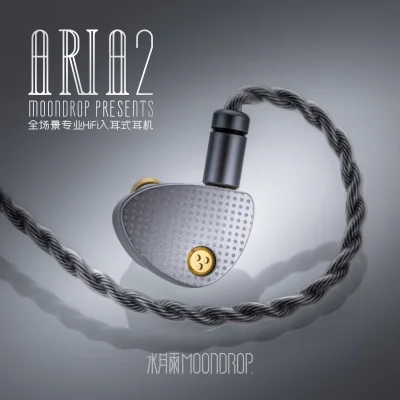
Price: $99.99
Buy Moondrop Aria 2 on Aliexpress
SIMGOT EG280 User Reviews
"This is an example review"
Pros
- Example pro 1
- Example pro 2
Cons
- Example con 1
- Example con 2
Share your experience and build your personal ranking list.
You need to be signed in to write your own reviewFind your next IEM:
IEM Finder Quiz
newIEM Comparison Tool
newVS


















